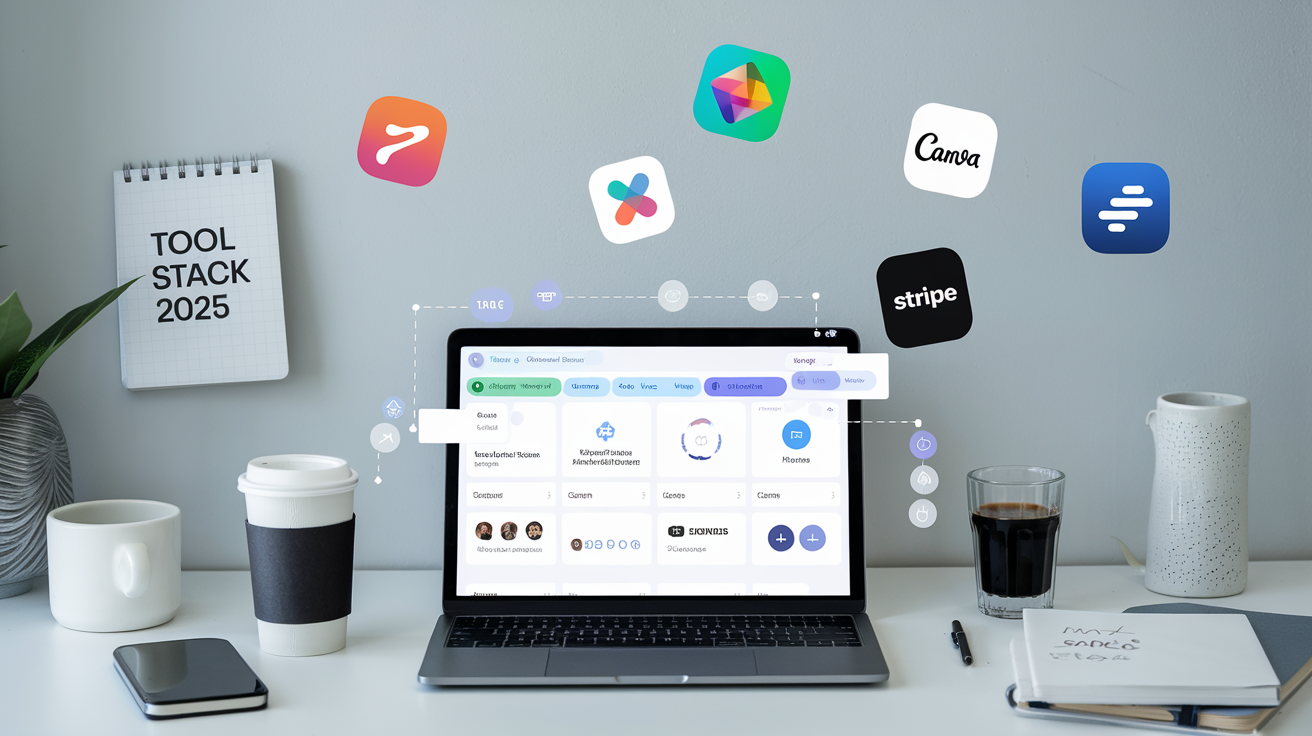How to Validate Your Business Idea Before Launching

Did you know that 90% of startups fail within their first year? Even more shocking: most of these failures could have been prevented with just 2-3 weeks of proper validation.
If you’re sitting on a business idea that keeps you up at night with excitement, you’re not alone. But here’s the harsh reality: your brilliant idea might be a complete flop in the real market. The difference between successful entrepreneurs and those who burn through their savings isn’t the quality of their initial idea—it’s whether they validated it first.
You’re about to discover the exact step-by-step process that successful entrepreneurs use to test their ideas before risking everything. By the end of this guide, you’ll know whether your business concept has real potential or if you should pivot before it’s too late.
No more guesswork. No more expensive mistakes. Just a clear roadmap to turn your idea into a validated, profitable business.
Table of Contents
- 🎯 Why Most Business Ideas Fail (And How Validation Prevents It)
- 🔍 Market Research: Understanding Your Audience Before You Build
- 💡 The MVP Approach: Testing With Minimal Investment
- 📊 Customer Discovery: Getting Real Feedback From Real People
- 💰 Financial Validation: Will People Actually Pay For This?
- 🛠️ Essential Tools and Resources for Business Validation
- ⚠️ Red Flags That Signal You Should Pivot
- ✅ Your 30-Day Validation Action Plan
🎯 Why Most Business Ideas Fail (And How Validation Prevents It) {#why-most-fail}
The number one reason businesses fail isn’t lack of funding or poor execution—it’s building something nobody wants.
Marc Andreessen, co-founder of Netscape, calls this “the only thing that matters.” You can have the most beautiful product, the best team, and unlimited resources, but if there’s no market demand, you’re dead in the water.
The Validation Safety Net
Business idea validation is your insurance policy against failure. It’s the process of testing your assumptions about customers, market demand, and business viability before you invest significant time or money.
Think of it like this: Would you buy a house without getting it inspected first? Of course not. Yet entrepreneurs constantly “buy into” business ideas without any inspection at all.
Here’s what proper validation prevents:
- Wasted months or years building the wrong product
- Financial losses from investing in unproven concepts
- Emotional burnout from pursuing dead-end ventures
- Opportunity cost of missing better business ideas
Pro tip: The best time to validate is when you’re still excited but before you’ve made any major commitments. Passion clouds judgment, but early validation keeps you grounded in reality.
The Validation Mindset Shift
Successful entrepreneurs don’t ask “How can I build this?” They ask “Should I build this?“
This mindset shift transforms you from a hopeful dreamer into a strategic business builder. You’ll make decisions based on data, not emotions.
🔍 Market Research: Understanding Your Audience Before You Build {#market-research}
Market research isn’t about dusty academic reports. It’s about understanding the real people who might buy from you and the real problems they’re desperately trying to solve.
Start With Secondary Research
Before you talk to a single potential customer, gather intelligence on your market:
- Industry Reports and Trends
- Search for “[your industry] market research 2024”
- Check government databases like Census.gov for demographic data
- Use Google Trends to see if interest in your topic is growing or declining
- Competitor Analysis
- Identify your top 5-10 competitors
- Study their pricing, marketing messages, and customer reviews
- Look for gaps in what they’re offering
- Social Media Listening
- Join Facebook groups where your target audience hangs out
- Search Twitter/X for complaints about existing solutions
- Read comments on competitors’ posts to understand customer frustrations
Primary Research: Getting Direct Customer Insights
This is where the magic happens. You’ll talk directly to potential customers to understand their world.
Create Customer Personas
Don’t just guess who your customers are. Build detailed profiles:
- Demographics: Age, income, location, job title
- Psychographics: Values, fears, motivations
- Behavior patterns: Where they shop, how they make decisions
- Pain points: What keeps them up at night?
Where to Find Your Target Audience
- LinkedIn groups in your industry
- Reddit communities (subreddits)
- Industry conferences and meetups
- Online forums and communities
- Social media groups
Pro tip: Don’t just lurk in these communities. Become a helpful member first. Share valuable insights, answer questions, and build relationships. This makes people more willing to help with your research later.
Validate Market Size and Demand
Use these methods to confirm there’s actually a market for your idea:
- Google Keyword Planner: Check monthly search volume for terms related to your solution
- Amazon Best Sellers: See what’s selling in related categories
- Crowdfunding Platforms: Browse Kickstarter and Indiegogo for similar products and their funding levels
- Industry Publications: Look for articles discussing the problems you want to solve
💡 The MVP Approach: Testing With Minimal Investment {#mvp-approach}
A Minimum Viable Product (MVP) isn’t a watered-down version of your full vision. It’s the smallest thing you can build that still provides value and tests your core assumptions.
Types of MVPs for Different Business Models
For Service Businesses:
- Landing page MVP: Create a simple website describing your service and collect email signups
- Manual delivery: Personally deliver the service to 5-10 customers before automating anything
For Product Businesses:
- Prototype: Build a basic version using cheap materials or 3D printing
- Pre-order campaign: Sell the product before manufacturing it
For Digital Products:
- Email course: Turn your idea into a free 5-day email series
- PDF guide: Create a comprehensive guide addressing your target problem
For SaaS/Tech:
- No-code tools: Use platforms like Bubble, Webflow, or Airtable to build without coding
- Concierge MVP: Manually perform the functions your software would eventually automate
The Lean Startup Method
This approach, popularized by Eric Ries, follows a simple cycle:
- Build: Create your MVP quickly and cheaply
- Measure: Collect data on how customers respond
- Learn: Analyze the data and decide whether to pivot or persevere
The goal isn’t perfection—it’s learning as fast as possible with the least amount of investment.
MVP Success Metrics
Define what success looks like before you launch:
- Engagement rates: Do people actually use your MVP?
- Conversion rates: How many visitors become customers?
- Customer feedback scores: Are people genuinely excited?
- Retention rates: Do customers come back or refer others?
Pro tip: Set both quantitative metrics (numbers) and qualitative metrics (feedback themes). Sometimes the numbers look good but the feedback reveals fundamental problems.
📊 Customer Discovery: Getting Real Feedback From Real People {#customer-discovery}
Customer discovery is the art of having conversations that reveal truth instead of politeness. Most people won’t hurt your feelings by saying your idea sucks—unless you ask the right questions the right way.
The Customer Interview Framework
Before the Interview:
- Prepare 8-10 open-ended questions
- Don’t mention your solution until the very end
- Focus on understanding their current situation and pain points
During the Interview:
Start with background questions:
- “Tell me about your typical day/week”
- “What’s the biggest challenge you face with [relevant area]?”
- “How do you currently handle [specific problem]?”
Dig deeper into problems:
- “Can you walk me through the last time that happened?”
- “What have you tried to solve this?”
- “If you could wave a magic wand and fix this, what would that look like?”
Sample Interview Questions:
- How do you currently [solve the problem your business addresses]?
- What’s most frustrating about your current solution?
- Have you spent money trying to solve this problem? How much?
- Who else is involved in this decision in your household/company?
- If I could solve this problem perfectly, what would that be worth to you?
How to Find Interview Subjects
Warm Network First:
- Friends, family, and colleagues who fit your target demographic
- LinkedIn connections
- Social media followers
Cold Outreach:
- LinkedIn messages (keep it brief and personal)
- Email to industry professionals
- Comments on relevant blog posts or forums
Incentivize Participation:
- Offer a small gift card ($10-25)
- Provide early access to your solution
- Share interview insights with participants
Analyzing Interview Data
After 10-15 interviews, look for patterns:
- Common pain points mentioned by multiple people
- Similar language used to describe problems
- Consistent price points people mention
- Shared behaviors and preferences
Pro tip: Record interviews (with permission) so you can focus on the conversation instead of note-taking. Go back and listen for emotional cues—frustration, excitement, resignation—that reveal how deeply people feel about problems.
💰 Financial Validation: Will People Actually Pay For This? {#financial-validation}
The ultimate validation is money changing hands. Everything else is just conversation.
Pre-Selling Strategies
- Crowdfunding Campaigns
- Launch on Kickstarter, Indiegogo, or industry-specific platforms
- Set a funding goal that covers your initial costs
- Success proves market demand; failure teaches you valuable lessons
- Pre-Order Systems
- Create a “coming soon” landing page with pre-order options
- Offer early-bird pricing to incentivize purchases
- Use tools like Gumroad or Shopify for easy setup
- Service Packages
- Sell consulting or done-for-you services before creating products
- Package your expertise into high-value offerings
- Use revenue to fund product development
Pricing Research Methods
Van Westendorp Price Sensitivity Meter:
Ask potential customers four questions:
- At what price would this be so expensive you wouldn’t consider it?
- At what price would you consider this expensive but still worth considering?
- At what price would you consider this a bargain?
- At what price would this be so cheap you’d question the quality?
Plot these answers to find your optimal price range.
A/B Test Different Price Points:
- Create multiple landing pages with different pricing
- Send traffic to each version
- Measure conversion rates and revenue per visitor
Financial Viability Calculations
Before moving forward, ensure your business model makes sense:
Unit Economics:
- Customer Acquisition Cost (CAC)
- Customer Lifetime Value (LTV)
- Gross margin per unit
- Break-even point
Simple Profitability Formula: Revenue per customer – (Cost of goods + Marketing cost + Operational cost) = Profit per customer
If this number is negative or too small, your business won’t work at scale.
Pro tip: Many entrepreneurs focus only on revenue but forget about profitability. A business that generates $100k in revenue but costs $120k to run is a hobby, not a business.
🛠️ Essential Tools and Resources for Business Validation {#validation-tools}
The right tools can accelerate your validation process and provide clearer insights.
Market Research Tools
Free Options:
- Google Trends: Identify trending topics and seasonal patterns
- Google Keyword Planner: Research search volume and competition
- Facebook Audience Insights: Understand demographics and interests
- Reddit: Real conversations about problems and solutions
Paid Tools:
- SEMrush ($99/month): Comprehensive keyword and competitor research
- Ahrefs ($99/month): Advanced SEO and content research
- SurveyMonkey ($25/month): Professional survey creation and analysis
MVP Building Platforms
No-Code Website Builders:
- Webflow: Professional websites without coding
- Squarespace: Beautiful templates with e-commerce
- WordPress: Flexible and affordable option
Landing Page Builders:
- Unbounce: High-converting landing pages
- Leadpages: Simple drag-and-drop interface
- Instapage: Advanced personalization features
E-commerce Testing:
- Shopify: Full e-commerce platform with 14-day free trial
- Gumroad: Perfect for digital products
- WooCommerce: WordPress-based online store
Customer Feedback Tools
Survey Platforms:
- Typeform: Beautiful, conversational surveys
- Google Forms: Free and functional
- Hotjar: Website heatmaps and user recordings
Interview Tools:
- Zoom: Video calls with recording capability
- Calendly: Easy interview scheduling
- Otter.ai: Automatic transcription of conversations
Analytics and Testing
Website Analytics:
- Google Analytics: Free, comprehensive website data
- Mixpanel: Advanced user behavior tracking
- Hotjar: Visual behavior analytics
A/B Testing:
- Google Optimize: Free testing platform
- Optimizely: Enterprise-level testing
- VWO: User-friendly interface for beginners
⚠️ Red Flags That Signal You Should Pivot {#red-flags}
Sometimes the best business decision is knowing when to quit. Here are warning signs that your idea needs major changes or should be abandoned.
Market Red Flags
- Shrinking Market Size
- Industry reports show declining trends
- Google Trends reveals decreasing search interest
- Major players are exiting the market
- Overcrowded Competition
- Dozens of similar solutions already exist
- Big companies (Google, Amazon, Microsoft) dominate the space
- No clear way to differentiate your offering
- Regulatory Concerns
- Heavy government regulation in your industry
- Legal barriers to entry
- Compliance costs that make profitability difficult
Customer Red Flags
- Lukewarm Responses
- People say “that’s interesting” instead of “I need this now”
- No emotional reaction when you describe the problem
- Customers aren’t willing to pay premium prices
- Long Sales Cycles
- Customers take months to make purchase decisions
- Multiple stakeholders need to approve purchases
- Complex implementation requirements
- Low Retention Rates
- Customers use your product once and never return
- High churn rates in your MVP testing
- Difficulty getting referrals or word-of-mouth growth
Financial Red Flags
- Unsustainable Unit Economics
- Customer acquisition costs exceed customer lifetime value
- Profit margins too thin to support growth
- High operational costs that don’t scale
- Limited Market Size
- Total addressable market under $100 million
- Niche so specific that expansion is impossible
- Geographic limitations that prevent scaling
Pro tip: One red flag isn’t necessarily a death sentence, but multiple red flags appearing together usually indicate fundamental problems that require major pivots.
When to Pivot vs. Persevere
Pivot When:
- Multiple validation methods show consistent negative results
- You’ve tested different approaches for 3+ months without improvement
- Market conditions have fundamentally changed
- You’ve discovered a better opportunity
Persevere When:
- Early metrics are improving, even if slowly
- Customer feedback is positive but suggests minor adjustments
- You’re learning valuable lessons that inform product development
- Market timing might be early but trends are favorable
✅ Your 30-Day Validation Action Plan {#action-plan}
Stop planning and start validating. Here’s exactly what to do in the next 30 days to validate your business idea and move forward with confidence.
Week 1: Market Research and Analysis
Days 1-2: Define Your Idea Clearly
- Write a one-sentence description of your business idea
- Identify the specific problem you’re solving
- Define your target customer in detail
Days 3-4: Competitive Analysis
- List 10 direct and indirect competitors
- Analyze their pricing, marketing, and customer reviews
- Identify gaps in the market
Days 5-7: Market Research
- Use Google Trends and Keyword Planner for demand validation
- Join 3-5 online communities where your target customers gather
- Create a simple survey using Google Forms or Typeform
Week 2: Customer Discovery
Days 8-10: Recruit Interview Subjects
- Reach out to your network for potential interviewees
- Post in relevant online communities (following group rules)
- Aim to schedule 10-15 customer interviews
Days 11-14: Conduct Customer Interviews
- Complete 8-12 customer interviews
- Record sessions (with permission) for later analysis
- Take detailed notes on pain points and current solutions
Week 3: MVP Development and Testing
Days 15-17: Create Your MVP
- Build a simple landing page describing your solution
- Create a basic prototype or service offering
- Set up analytics to track visitor behavior
Days 18-21: Drive Traffic and Collect Data
- Share your MVP with interview subjects
- Post in relevant online communities
- Track sign-ups, conversion rates, and user feedback
Week 4: Financial Validation and Decision
Days 22-24: Test Willingness to Pay
- Add pricing to your landing page
- Offer pre-orders or early access for payment
- Test different price points if possible
Days 25-27: Analyze All Data
- Review interview notes for common themes
- Analyze website analytics and conversion rates
- Calculate basic unit economics
Days 28-30: Make Your Decision
- Compile all validation data into a simple report
- Decide whether to proceed, pivot, or abandon the idea
- Create next steps based on your decision
Validation Success Criteria
Green Light Indicators:
- 70%+ of interview subjects express strong interest
- Landing page converts at 15%+ email signup rate
- At least 10% of visitors willing to pre-order or pay
- Clear path to profitability with reasonable assumptions
Yellow Light (Needs Adjustment):
- Moderate interest but concerns about specific features
- Decent traffic but low conversion rates
- Price sensitivity issues that could be resolved
- Market exists but timing might be early
Red Light (Pivot or Stop):
- Consistently lukewarm or negative feedback
- Very low website engagement and conversion rates
- No one willing to pay at any reasonable price point
- Fundamental market or competitive problems
Conclusion
Validating your business idea isn’t just a smart precaution—it’s the difference between building a real business and pursuing an expensive hobby.
You now have the complete framework that successful entrepreneurs use to test ideas before risking everything. From market research and customer discovery to MVP testing and financial validation, these proven methods will save you time, money, and heartache.
Remember: validation isn’t about proving you’re right—it’s about discovering the truth as quickly and cheaply as possible. Sometimes that truth is uncomfortable, but it’s always better than building something nobody wants.
The entrepreneurs who succeed aren’t the ones with the best initial ideas. They’re the ones who validate relentlessly, pivot when necessary, and only commit serious resources to proven opportunities.
Your next step is simple: Pick one validation method from this guide and start today. Don’t wait for perfect conditions or complete certainty. Start with customer interviews, build a simple landing page, or join online communities where your customers gather.
The market is waiting to tell you exactly what it wants. Are you ready to listen?
Ready to turn your validated idea into a real business? Download our free Business Launch Checklist that guides you through every step from validation to your first sale.







